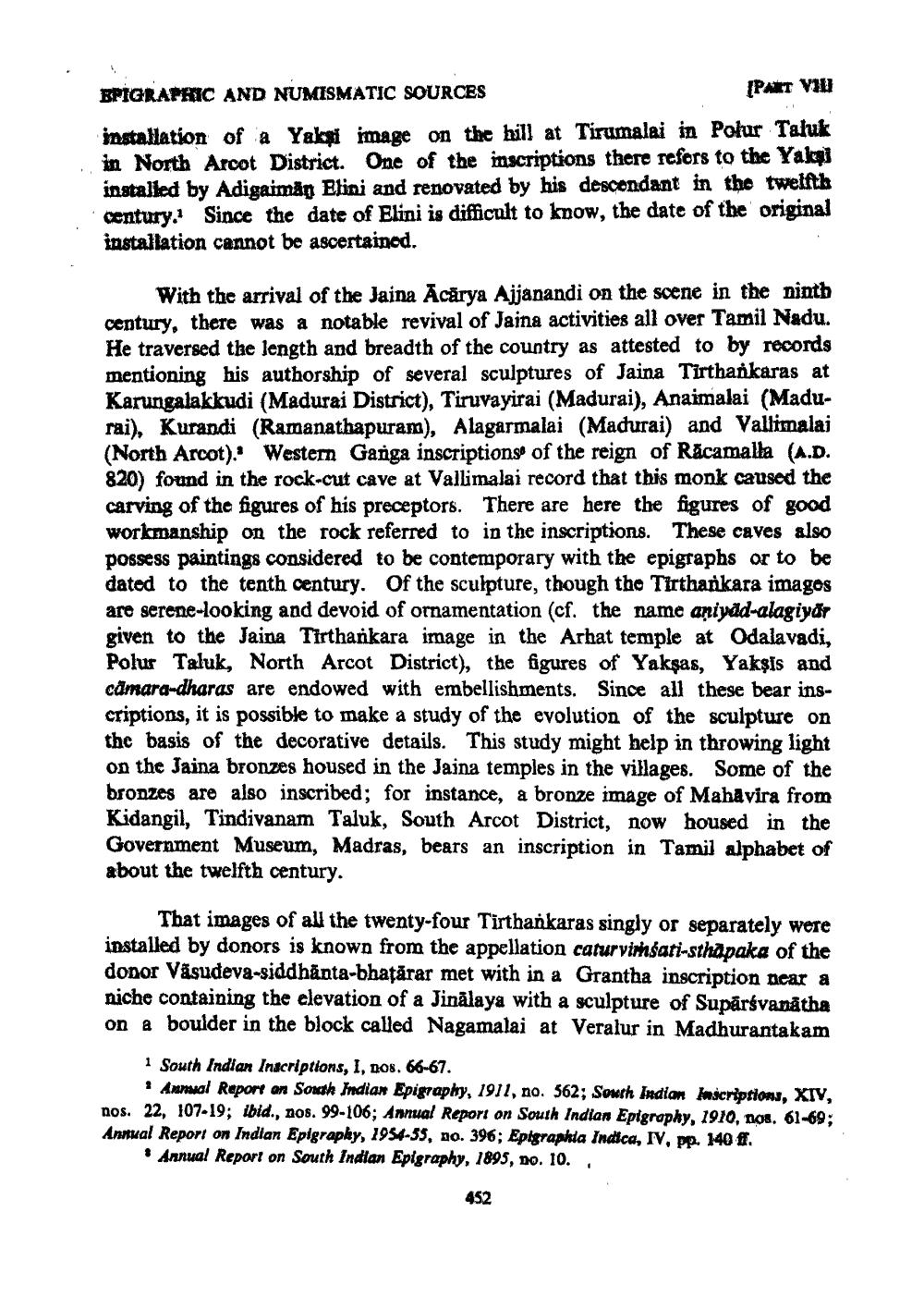________________
EPIGRAPHIC AND NUMISMATIC SOURCES
[PART VI
installation of a Yakal image on the hill at Tirumalai in Polur Taluk in North Arcot District. One of the inscriptions there refers to the Yakal installed by Adigaiman Elini and renovated by his descendant in the twelfth century. Since the date of Elini is difficult to know, the date of the original installation cannot be ascertained.
With the arrival of the Jaina Acarya Ajjanandi on the scene in the ninth century, there was a notable revival of Jaina activities all over Tamil Nadu. He traversed the length and breadth of the country as attested to by records mentioning his authorship of several sculptures of Jaina Tirthankaras at Karungalakkudi (Madurai District), Tiruvayirai (Madurai), Anaimalai (Madurai), Kurandi (Ramanathapuram), Alagarmalai (Madurai) and Vallimalai (North Arcot). Western Ganga inscriptions of the reign of Racamalla (A.D. 820) found in the rock-cut cave at Vallimalai record that this monk caused the carving of the figures of his preceptors. There are here the figures of good workmanship on the rock referred to in the inscriptions. These caves also possess paintings considered to be contemporary with the epigraphs or to be dated to the tenth century. Of the sculpture, though the Tirthankara images are serene-looking and devoid of ornamentation (cf. the name aniydd-alagiyär given to the Jaina Tirthankara image in the Arhat temple at Odalavadi, Polur Taluk, North Arcot District), the figures of Yaksas, Yaksis and camara-dharas are endowed with embellishments. Since all these bear inscriptions, it is possible to make a study of the evolution of the sculpture on the basis of the decorative details. This study might help in throwing light on the Jaina bronzes housed in the Jaina temples in the villages. Some of the bronzes are also inscribed; for instance, a bronze image of Mahavira from Kidangil, Tindivanam Taluk, South Arcot District, now housed in the Government Museum, Madras, bears an inscription in Tamil alphabet of about the twelfth century.
That images of all the twenty-four Tirthankaras singly or separately were installed by donors is known from the appellation caturviśati-sthapaka of the donor Vasudeva-siddhanta-bhațărar met with in a Grantha inscription near a niche containing the elevation of a Jinalaya with a sculpture of Supārsvandtha on a boulder in the block called Nagamalai at Veralur in Madhurantakam
1 South Indian Inscriptions, I, nos. 66-67.
• Annual Report on South Indian Epigraphy, 1911, no. 562; South Indian Inscriptions, XIV, nos. 22, 107-19; ibid., nos. 99-106; Annual Report on South Indian Epigraphy, 1910, nos. 61-69; Annual Report on Indian Epigraphy, 1954-55, no. 396; Epigraphia Indica, IV, pp. 140 ff.
Annual Report on South Indian Epigraphy, 1895, no. 10.
452




